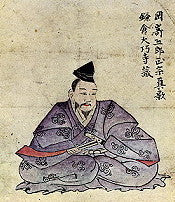Your Cart is Empty


Swordmaking isn't just a typical professional in Japan; it's an artistic craft that's been passed down and enhanced over hundreds of years. The process often of forging a traditional Japanese sword took days, sometimes even weeks, and included a variety of Shinto religious rituals.
While countless Japanese swordsmiths have appeared throughout history, none are more famous than Gorō Nyūdō Masamune. So, who was Masamune and how did he leave such a lasting impression on Japan's swordmaking craft?
The Story of Masamune
Masamune, also known as Priest Gorō Masamune, is arguably the most recognizable name in the history of Japanese swordsmithing. While there are no exact dates regarding his life, historians believe he was born around 1264. Throughout his life, Masamune created some of the finest-quality swords, daggers and other weapons, with his artistic craft peaking from roughly 1288 to 1328.
It's said that Masamune studied the art of swordmaking under Shintōgo Kunimitsu. Through his teachings, Masamune learned to forge blades using a straight temper line, as well as other styles. One of the most distinguishable characteristics of Masamune's work, however, was the presence of chichi, which is essentially dark lines flowing in the same direction of the grain above the hamon. Masamune's swords also feature lightning shaped lines of nie and crystals of martensite in a pearlite matrix.
Swords crafted by Masamune are said to boast an unparalleled level of beauty and quality. At the time, steel was relatively new, so it contained large amounts of impurities -- and these impurities had a negative effect on the quality of swords. Masamune, however, was able to overcome this challenge by producing some of the strongest, sharpest and most aesthetically pleasing blades the world had ever seen.
Masamune Legends
There are dozens of legends surrounding the legendary Japanese swordsmith Masamune. One such legend tells the story of a swordsmith student named Murasama and his teacher Masamune who were summoned to forge swords for the Emperor. When they were finished, Murasama and Masamune's swords were held in a waterfall. Other stories have suggested that blades crafted by Masamune were holy and imbued with special powers.
Historians believe that Masamune trained more a dozen swordsmiths, including the "Ten Famous Students" as noted in the Great Juttetsu. Today, Masamune remains a legendary name, not only in Japan but throughout many parts of the world. He's the most iconic name in swordsmithing, with his techniques still being practiced by modern-day swordsmiths.